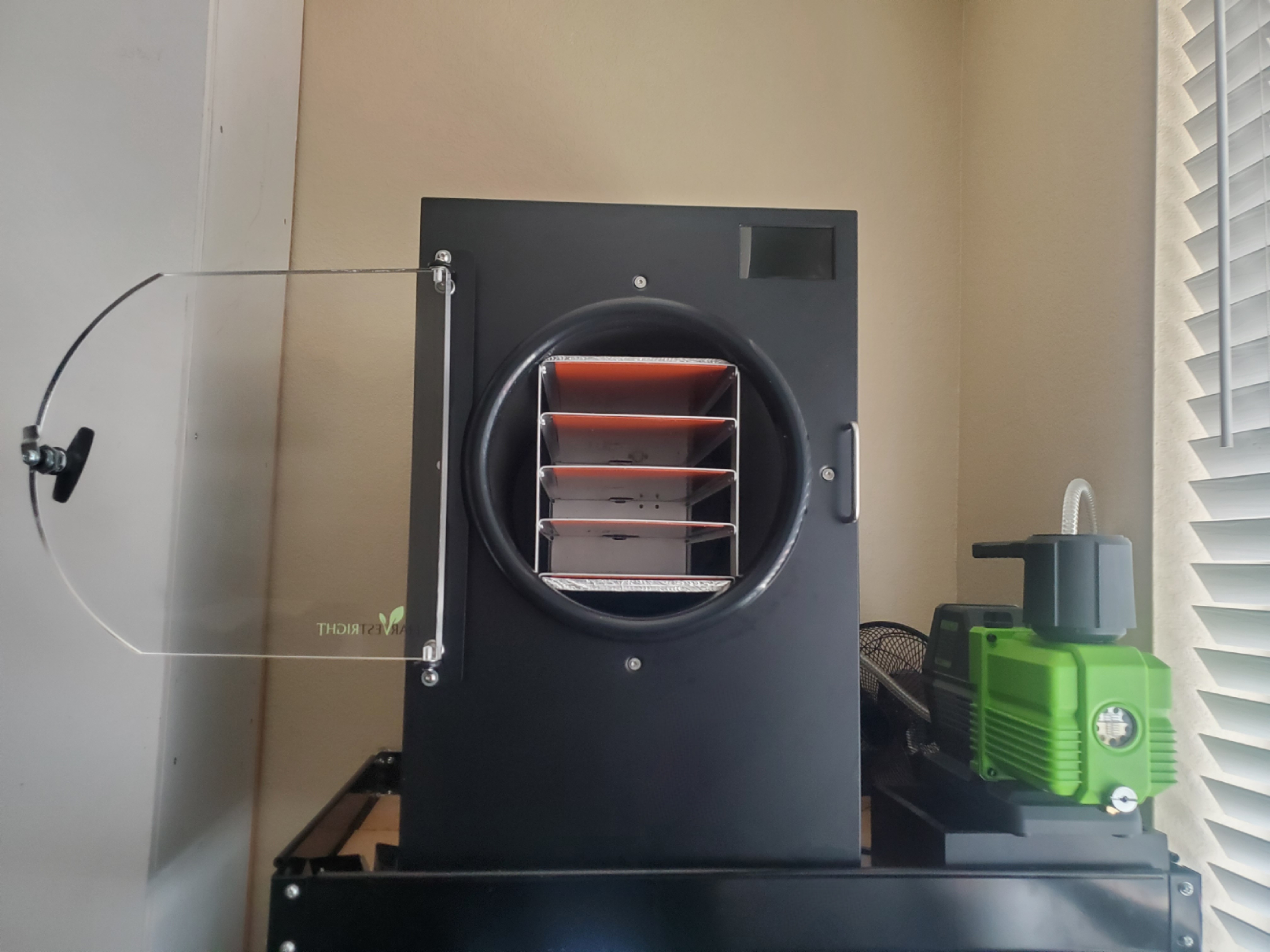How does freeze drying work?
How Does Freeze Drying Work? A Comprehensive Guide to Food Preservation
How Does Freeze Drying Work

Freeze-drying, also known as lyophilization or cryodesiccation, is a common method of food preservation. So, How Does Freeze Drying Work? Water is extracted from meals using freezing, low pressure, and heat. When compared to other food preservation procedures such as canning, pickling, and dehydrating, freeze-drying has some distinct advantages. Unlike traditional methods that employ high heat, salt, vinegar, or sugar to preserve food, freeze-drying uses moderate temperatures and vacuum pressure. This "low and slow" process first removes up to 95% of the water, resulting in a final product that is less dense in nutrients, weighs less, and can be stored for a longer period of time.
Freeze-drying has a fascinating history that dates back to 1906 when it was largely utilized to preserve blood serum during WWII. The pharmaceutical and food industries were reluctant to recognize the benefits of freeze-drying technology, and it wasn't until the 1950s that they did. Today, Harvest RightTM leads the market in the usage of freeze-drying machines in both commercial and residential settings.
So, How Does Freeze Drying Work in preserving food? It is a wonderful way to preserve the original flavor, texture, and look of a wide range of foods, including fruits, vegetables, meats, and even sweets. One of the key benefits of this technology is the ability to preserve artifacts in their original form. In contrast to other processing procedures, which result in the loss of nutrients, enzymes, and flavors throughout the preparation process, the low-temperature method aids in the preservation of the product's inherent nutritional value. Because freeze-drying extends the shelf life of goods for years without the need for refrigeration or additives, it is a cost-effective and simple option for home cooks, outdoor enthusiasts, and those preparing for an emergency.
Using a freeze-dryer at home is straightforward. Prepare the food, either by cooking it or leaving it raw, then pre-freeze it, place it in the freeze dryer, begin the batch, and finally package the finished product. A freeze-dryer may appear to have a high initial cost, but in the long term, it will save you money, help you waste less food, and provide you with healthier and more flavorful meal options.
But, How Does Freeze Drying Work in the medical industry? It has also benefited from the advancement of freeze-drying technology, which may be used to preserve and store sensitive biological materials such as immunizations, blood plasma, and antibiotics. Freeze-drying is a consistent and successful process for preserving the potency and uniformity of products that must be stored under precise circumstances in order to preserve their usefulness.
The freeze-drying method is not just useful in the food and medical industries. Additionally, it is utilized in the field of archaeology to maintain the integrity of artifacts, as well as in the field of aerospace engineering to fabricate components for spacecraft that are both lightweight and robust. Freeze-drying has also found its way into the production of cosmetics and other skin care products. It is used in this application to create powders and lotions that dissolve easily and quickly when applied to the skin.
Freeze-drying offers several advantages, but it also has certain disadvantages. How Does Freeze Drying Work with certain types of food? Freeze-drying a food product can be an expensive and time-consuming operation, and not all foods are suited for this method. Foods high in fat, sugar, or salt may not freeze-dry well, and the method may alter the flavor of certain meals. So, How Does Freeze Drying Work for different types of food?
To answer this question, we must understand the process of freeze-drying. The process involves three stages: freezing, primary drying, and secondary drying.
During the freezing stage, the food product is rapidly frozen at a temperature below its freezing point. This is usually done in a blast freezer or by placing the product in a regular freezer. The goal is to freeze the product as quickly as possible to minimize the formation of large ice crystals that could damage the food's cellular structure.
Once the product is frozen, it is placed in a vacuum chamber and subjected to low pressure. This causes the ice crystals in the food to sublimate, which means they transition directly from a solid to a gas without passing through a liquid phase.
The process is called primary drying, and it can take anywhere from several hours to a few days, depending on the size and complexity of the product.
After the primary drying stage is complete, the product undergoes a second drying stage called secondary drying. During this stage, any residual moisture that was not removed in the primary drying stage is removed by increasing the temperature of the vacuum chamber slightly. This causes any remaining ice to sublimate, leaving the product completely dry.
Now, back to the question of how freeze-drying works for different types of food. As mentioned earlier, foods high in fat, sugar, or salt may not freeze-dry well because they tend to have a lower water content and can be difficult to completely dry. Additionally, some foods may have a high water content or a delicate cellular structure that can be damaged during the freeze-drying process. For example, certain fruits and vegetables may become mushy or lose their shape when freeze-dried.
However, there are many types of food that are well-suited for freeze-drying. Some of the most popular freeze-dried foods include fruits, vegetables, and meats. Freeze-dried fruits and vegetables retain their original color, texture, and nutritional content, making them a great choice for snacking or for use in recipes. Freeze-dried meats, such as beef or chicken, can be rehydrated and used in stews, soups, or casseroles.
Another benefit of freeze-drying is that it can be used to preserve foods that are difficult to preserve using other methods. For example, herbs and spices can be freeze-dried and ground into a powder for use in cooking. This allows for a longer shelf life and better flavor retention than traditional drying methods.
Freeze-drying is a fascinating and innovative method of food preservation that has revolutionized the food and medical industries. While it may not be suitable for all types of food, it offers a unique and effective way to preserve foods for extended periods while retaining their texture, taste, and nutritional content. Understanding how freeze drying works is important to make the most out of this preservation technique. With the right equipment and techniques, freeze-drying can be an excellent choice for home cooks, outdoor enthusiasts, and those preparing for emergencies.

